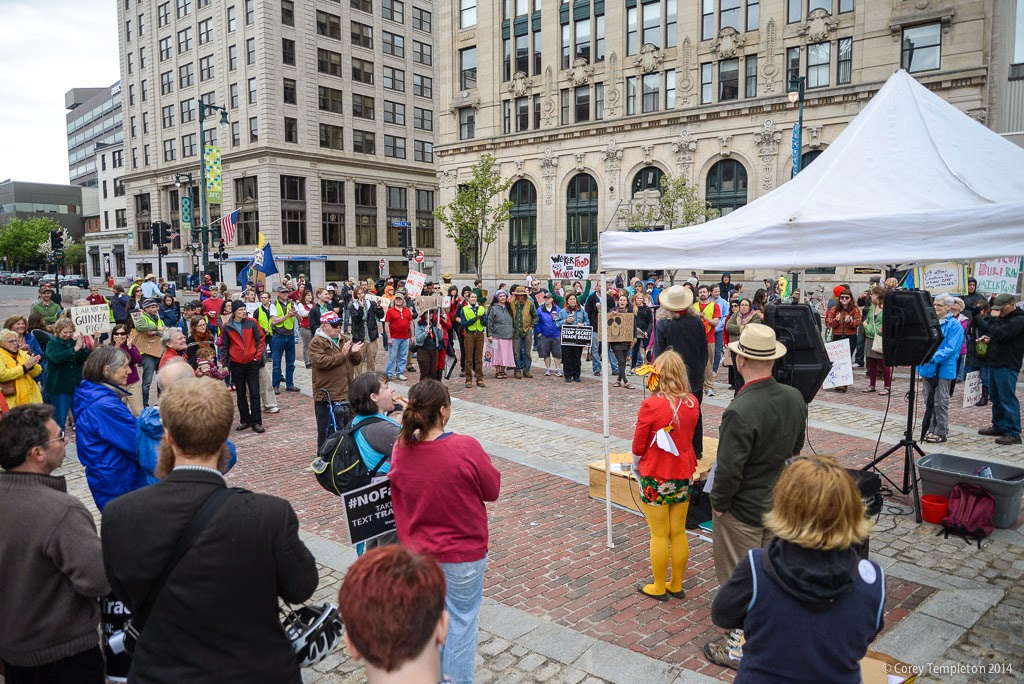In its ideal sense, the smart city is engineered with efficiency and habitability in mind. Using technology, adaptability, and common sense, the smart city should inherently preempt the public “cry and demand” for change, constantly working behind the scenes to accommodate the people’s needs. [1] In reality, however, the well-intentioned solutions offered up by the tech companies and planners tasked with redesigning cities can often fall short due to their misguided assumptions about the public.
Design issues are all too common in the recent history of establishing public space. Although Battery Park, Zucotti Park, and Portland’s Congress Square Park were not created under the guise of smart design, they share a modern “design vocabulary” that actually suffers due to its own sleekness and limits their use. [2]Continuing to focus on these three examples, one can observe specific issues in each public space. Wealthy inhabitants of the Financial DIstrict almost exclusively utilize Battery Park. Zucotti Park was entirely faceless and useless until it served Occupy Wall Street protesters’ purpose. Congress Square Park was so underutilized that the City of Portland was willing to sell it to a private entity. These symptoms of restrictive design contrast greatly with the success of older public spaces like Union Square and Monument Square, which were designed long before minimalist smart design was even conceptualized.


This reality illustrates an important point about public space: it must serve many purposes in order to truly serve the public. In this sense, designing parks and intuitive gathering spaces for the modern city is more difficult, since even the most diligent smart city planner cannot predict how a space will be used. The “publicness” of space, as described by Setha Low, depends on factors of access, freedom of action, claim, change, and ownership. [3] By this model, a successful space for the public (not just a limited demographic) must be flexible, accessible, and central. In Portland, Monument Square satisfies those criteria with its liminal location between neighborhoods, proximity to public transportation and parking, and availability of city-owned open space. It was an ample home for the Occupy Movement in Portland, whereas Zucotti Park was chosen (despite its limiting design) for its proximity to Wall Street.
Monument Square is superior to Lincoln Park and Congress Square Park in that it allows “various groups to represent themselves” politically, socially, and recreationally. [4] This hierarchy of usability is seemingly backwards; one would expect parks to attract more of the public, but a paved treeless square ultimately wins out. Nevertheless, the square benefits from its centrality and flexible simplicity where deliberate smart designs have failed. Portland could see increased use of public spaces if they were redesigned to be more adaptable and more accessible; taking down the Lincoln Park fence could help, as could more events and flexible seating in Congress Square Park. Allowing the public to dictate the qualities of a space that is rightly their own will naturally lead to increased integration, representation, and recreation.
1. Mitchell, Don. 2014 [2003]. “To Go Again to Hyde Park: Public Space, Rights, and Social Justice.” In The People, Place and Space Reader, edited by Jen Jack Gieseking, et al, 192-196. New York: Routledge, 2014.
2. Low, Setha M. 2002. “Spaces of Reflection, Recovery, and Resistance: Reimagining the Postindustrial Plaza.” In After the World Trade Center: Rethinking New York City, edited by Micheal Sorkin and Sharon Zukin, 163-72. New York: Routledge, 2014
3. Ibid.
4. Mitchell, 194.
